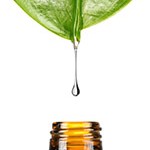 One of the most interesting forms of kratom available from vendors is kratom tincture, also sometimes called liquid kratom. Kratom tincture is made by macerating powdered or crushed kratom leaves in a solvent, typically alcohol, to extract the alkaloids in the herb. The best types of kratom tinctures are usually water-alcohol mixtures, since kratom’s diverse range of alkaloids is soluble in both water and alcohol.
One of the most interesting forms of kratom available from vendors is kratom tincture, also sometimes called liquid kratom. Kratom tincture is made by macerating powdered or crushed kratom leaves in a solvent, typically alcohol, to extract the alkaloids in the herb. The best types of kratom tinctures are usually water-alcohol mixtures, since kratom’s diverse range of alkaloids is soluble in both water and alcohol.
Benefits of Kratom Tincture:
Shaman’s Garden sources our liquid extracts from Herb Spirits. Our liquid herbal extracts come in amber glass bottles ideal for long-term storage, with dropper caps so you can precisely measure the amount of extract you want to work with. One way to use kratom tincture is to spray it onto a neutral base of dried herbs, such as mullein, and let it dry to make an incense blend. Some people prefer kratom tincture because it’s easy to store and has a long shelf life compared to powdered forms of kratom extract. Kratom tincture tends to last longer because the alcohol in the tincture protects the alkaloids from exposure to oxygen, which can degrade mitragynine and other kratom compounds. Our kratom extracts are for external use in aromatherapy purposes and as an incense component only.
How to Make Kratom Tincture:
It’s easier than ever to buy high-quality kratom tinctures from vendors. However, we know some of you like to take the do-it-yourself route, especially if you want to stretch your kratom and your dollars! Although making kratom tincture is a little more involved and requires a few more tools than making kratom resin, the final product is a compact and long-lasting form of kratom that is surprisingly versatile. Read on to find out how to make kratom tincture at home.
You Will Need:
-Plain powdered or crushed kratom leaf (not an extract!)
-40% ethyl alcohol. For those concerned about being exposed to alcohol, food-grade glycerin may be used instead. You can buy glycerin at most pharmacies.
-Measuring cups
-Digital scale
-Extraction bottle. These glass or plastic bottles are chemically resistant and won’t crack or leak chemicals into your finished tincture.
-Amber or blue glass bottle with dropper
-Strainer
-Funnel for pouring
Optional but Useful:
-Glycerin. This stabilizes the alcohol-based tincture and prevents evaporation. It’s also possible to make a non-alcoholic glycerin-based tincture (see above).
-Citric acid. The acidity facilitates extraction and converts the alkaloids in kratom from freebases to alkaloid salts. Both forms are present in the kratom leaf, but salts tend to be more stable.
Procedure:
Using your digital scale, measure your kratom precisely. A suggested ratio is 7 ounces of plain dried kratom leaf to 1 liter of alcohol. Combine your weighed kratom and alcohol in a chemically resistant bottle. Add the citric acid if you’re using it. Now you can either store the mixture in the fridge for about a week or take an extra step called a warm water bath to speed up the extraction process. Simmer water in a pot, then take it off the heat and carefully insert your extraction bottle. Leave the bottle for 30 minutes, then replace the water with more warm water and repeat.
After a few days to a week, pour your tincture into a dish through a strainer or sieve to remove the kratom plant material. Cover the dish with tin foil and let the alcohol evaporate until the tincture’s volume has decreased by about half. Using a measuring cup, measure the final volume of your kratom tincture. Divide this by the initial weight of kratom you used to estimate the finished tincture’s concentration. For instance, if you used 200 grams of dried kratom and ended up with 10 tablespoons of tincture, then the concentration is 20:1 (200/10 = 20). Tag your tincture with the variety and origin of kratom you used, the date, and the concentration. Your kratom tincture will typically keep for up to one year when stored away from sunlight in a cool, dry place.

Recent Comments